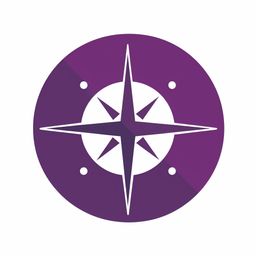DPS 周刊 141 - 划船与慢生产力

最近在划船课学到的一个道理是:把桨频降下来,可以滑得更快。
道理其实很简单,桨频过高会带来两个问题 -- 发力不充分,回桨的时候休息不够充分,这样总体效率比较低,而且容易疲惫。把桨频降下来之后,不仅发力更充分,单位效率更高,而且在回桨的时候有更多的休息时间,所以总体也不容疲惫。
仔细比较了桨频在24-26/分和桨频30以上的划船速度,同样的时间内,能划更多的距离,当然桨频降下来之后就没那么累。另外一个好处是,桨频降下来之后,我可以更充分地感知自己的动作,然后在下一桨做出及时调整。
这周读完了 Cal Newport 最新的 Slow Productivity,恰好提到了一模一样的道理。他对慢生产力的定义有三条:
- 少做;
- 根据自己的节奏来;
- 更注重质量
少做意味着有更多的时间可以分配,有更多时间意味着可以分配到这些事上,也可以拿去休息。如果把更多的时间分配到这些事上,那也就可以更专注在质量上。所以总体而言,最后的效果更好,人也不容易 burn out。这些不正好对应了上面降桨频的道理吗?
Cal 写道:1. Do fewer things. 2. Work at a natural pace. 3. Obsess over quality.
那么降桨频就是:1. Lower stroke frequency. 2. Stroke at a natural pace. 3. Obsess over efficiency.
之所以提出慢生产力的概念,是因为 Cal 发现当下生产力的概念是基于福特建成流水线而发明的,并不适用于脑力劳动者:
It was from this uncertainty that a simple alternative emerged: using visible activity as a crude proxy for actual productivity.
One particularly damning analysis, conducted by the software company RescueTime, and based on log data from over ten thousand knowledge workers, revealed that the subjects they studied checked their inbox once every six minutes on average.
KNOWLEDGE WORK (GENERAL DEFINITION) The economic activity in which knowledge is transformed into an artifact with market value through the application of cognitive effort.
慢生产力的第一条就是少做。这里的少做不是不做,而是选择做最有意义,最有影响力的事,把精力集中起来。这样做的好处是,不仅能把这些的进度推动起来,还能降低我们的焦虑。
PRINCIPLE #1: DO FEWER THINGS Strive to reduce your obligations to the point where you can easily imagine accomplishing them with time to spare. Leverage this reduced load to more fully embrace and advance the small number of projects that matter most.
My recommendation here is simple: work on at most one project per day.
But when it comes to expending efforts on important, bigger initiatives, stay focused on just one target per day.
There’s a calibrated steadiness to working on just one major initiative a day. Real progress accrues, while anxiety is subdued.
Slow productivity requires that you free yourself from the constraints of the small so that you can invest more meaningfully in the big.
Cal 推荐了一些方法帮助我们巧妙地说“不”,从而更好地专注在主要事项上,比如采用非及时沟通的方式,比如要别人细化需求再发给你,等等。
If you can connect a regularly recurring task block to a specific location, perhaps paired with a little ritual that helps initiate your efforts, you’re more likely to fall into a regular rhythm of accomplishing this work.
A direct strategy for reducing collaboration overhead is to replace asynchronous communication with real-time conversations.
Reverse task lists require people to spend more time specifying exactly what they need from you, which simplifies the later execution of their requests.
The more you can tame the small commitments pulling at your attention, the more sustainably and effectively you can work on things that matter.
Shifting to a pull-based operation made backlogs impossible: the pace of the pipeline would adapt to whatever stage was running slowest.
The first step in simulating a pull-based workflow is tracking all projects to which you’re currently committed on a list divided into two sections: “holding tank” and “active.”
When a new project is pushed toward you, place it in the holding-pen section of your list. There is no bound to the size of your holding tank.
The active position of the list, by contrast, should be limited to three projects at most.
send an acknowledgment message that formally acknowledges the project that you’re committing to complete, but that also includes the following three pieces of extra information: (1) a request for any additional details you need from the source before you can start the project, (2) a count of the number of existing projects already on your lists, and (3) an estimate of when you expect to complete this new work.
In the sixteenth century, Galileo’s professional life was more leisurely and less intense than that of the average twenty-first-century knowledge worker. Yet he still managed to change the course of human intellectual history.
慢生产力的第二条是根据自己的节奏来。就像划船一样,每一桨更充分地发力,每一回桨更充分地休息,都需要更多的时间。但这样的单位效率提高了,而且休息更多,所以总体效率更高,人还不容易累。
PRINCIPLE #2: WORK AT A NATURAL PACE Don’t rush your most important work. Allow it instead to unfold along a sustainable timeline, with variations in intensity, in settings conducive to brilliance.
There will always be more work to do. You should give your efforts the breathing room and respect required to make them part of a life well lived, not an obstacle to it.
If you instead give yourself more than enough time to accomplish your objectives, the pace of your work can fall into a more natural groove.
A simple heuristic to achieve this latter state is the following: take whatever timelines you first identify as reasonable for upcoming projects, and then double their length.
To reap this benefit, however, you actually have to simplify your daily schedule.
In other words, cut back on what you plan to accomplish while increasing your available time.
Cal 同样给出了一些根据自己节奏来的简历,比如每天不要开过多的会,不要在周一安排任务等等,甚至可以在不忙的工作日下午偷偷溜出去看电影,用来调节自己的心情。
When it comes to taming appointments, a good target is to ensure that no more than half of the hours in any single day are dedicated to meetings or calls.
Don’t schedule appointments on Mondays. You don’t need to make a public announcement about this decision.
There’s something about entering a movie theater on a weekday afternoon that resets your mind. The context is so novel—“most people are at work right now!”—that it shakes you loose from your standard state of anxious reactivity.
If you feel guilty about this decision, it helps to remember all of the extra hours you’ve spent checking email in the evening or working on your laptop over the weekend.
First, form your own personalized rituals around the work you find most important.
“If I bring people in, can I keep the door money, you can keep all the coffee and food, and, like, we’ll try to make it together.”
He gave her a critical piece of advice in response: “Do not ever write for radio. Ever.”
慢生产力的第三条是专注在质量上,这也和降桨频一样,只要单桨的效率高了,那么总体效率不会下降,甚至有可能提升。
PRINCIPLE #3: OBSESS OVER QUALITY Obsess over the quality of what you produce, even if this means missing opportunities in the short term. Leverage the value of these results to gain more and more freedom in your efforts over the long term.
If you want more control over your schedule, you need something to offer in return. More often than not, your best source of leverage will be your own abilities.
Studying Tarantino, however, I realized that working with lower genre tropes when pursuing higher ends, if given the right formal attention, can be a powerful creative exercise.
Understand your own field, to be sure, but also focus on what’s great about other domains. It’s here that you can find a more flexible source of inspiration, a reminder of what makes the act of creation so exciting in the first place.
In the mid-1930s, C. S. Lewis, then a professor of English literature at Magdalen College at Oxford University, started an informal writing and discussion club. He invited his friends to attend, including, notably, J. R. R. Tolkien, also a professor at Oxford at the time.
Forming a group of like-minded professionals, all looking to improve what they’re doing, provides a shortcut to improving your taste, an instantaneous upgrade to the standard of quality that you’re pursuing.
Alexander Graham Bell’s carefully maintained lab notebooks, for example, played a critical role in his successful patent dispute with rival telephone inventor Elisha Gray.
This was one of many different notebooks I used during this short period of my academic career, but there’s no doubt that this unusually expensive option played a disproportionate role in my productivity.
It’s true that these more expensive tools include more features than their cheaper counterparts, but the “I’m a professional now” vibe they induce is arguably just as valuable.
When someone has invested in your project, you’ll experience amplified motivation to pay back their trust.
Attracting other people to invest in you and your idea is a dramatic bet on yourself and your ability to not let others down.
Slow productivity is just one response among many to a much bigger problem: The world of cognitive work lacks coherent ideas about how our efforts should be organized and measured.
Slow productivity, more than anything else, is a plea to step back from the frenzied activity of the daily grind.
我们已经开通了微信支付和支付宝支付,如果你想及时读到 DPS 的全文,不妨直接付费订阅:
关于支付的详情介绍,可以访问这一页面。
Recap
当然,CV 上的经历是最重要的、最不容忽视的,但这个常被人忽视的 cover letter 也同样不可或缺。我深刻体会到,cover letter 不仅是简历的附属品,更是一封展示个性、动机和适应能力的信函,它为申请者提供了展示自己的机会,突显了申请者可以为团队带来的价值,甚至很多时候,能直接影响是否能进入面试。
Cover letter 的结构通常包括四个主要部分:
- 引言部分,介绍你的目的和求职意向。
- 主体段落,突出你的技能、经验和适应能力,以及解释为什么你适合该职位。
- 公司相关性段落,表明你对公司的了解和为什么选择该公司。
- 结尾部分,感谢招聘者的考虑并表达进一步沟通的愿望。

Anne-Laure Le Cunff 同时在进行好几个大项目:攻读博士,经营 NessLabs,还有写书。她是如何管理自己的时间的呢?她采用了一种叫做 timeshielding 的方法:
- 把时间先分配给最重要的事,其他的事可以靠后;
- 要习惯性地说不,保护自己的时间;
- 管理自己的精力,而不仅仅是时间。

《黑天鹅》,《反脆弱》的作者 Nassim Taleb 介绍了他对书籍的一些看法:
- 当他厌倦某本书时,他会换一本书读,而不是直接放弃阅读;
- 一本值得重读的书才是好书,重读会让你获得更多的价值;
- 喝高年份的酒,读高年份的书,维护老朋友;
- 让不同背景的人总结同一本书,如果大家的总结越不一样,这本书的价值越高。

Morgen Housel 揭示了为什么聪明反被聪明误:
- 非常聪明的人可能会用复杂的理论来愚弄自己,解释为什么会发生某事。
- 非常聪明会让你更难倾听那些资历不如你的人,即使他们可能有正确答案。
- 有一个需要维护的声誉可能会让你在需要改变主意时感到困难。

Paul Graham 指出最危险的浪费财富和时间的方式:
- 最危险的财富浪费不是挥霍,而是乱投资;
- 最危险的时间浪费不是玩乐,而是最无意义的努力;
- 两者的共同点在于我们以为这些都是有效的,从而放弃警惕;
- 无意义努力更可悲的在于我们还感受不到乐趣。

Aaron Francis 总结了自己如何一直保持动力的秘诀:
- 即使发现一件事很难,也可以从一小部分开始做起;
- 只要开始做,就会找到动力;
- 只要开始做,就会打开思路;
- 要明白,即使中途也可以改变方向,所以一开始起步方向不对也没关系。

Archive
本周的生产力日报集合就到此为止,如果你有什么建议,也欢迎留言告诉我们。如果想要收到最及时的推荐,不妨订阅我们的频道,或者付费解锁更多增值内容,我们下期见。





Comments ()